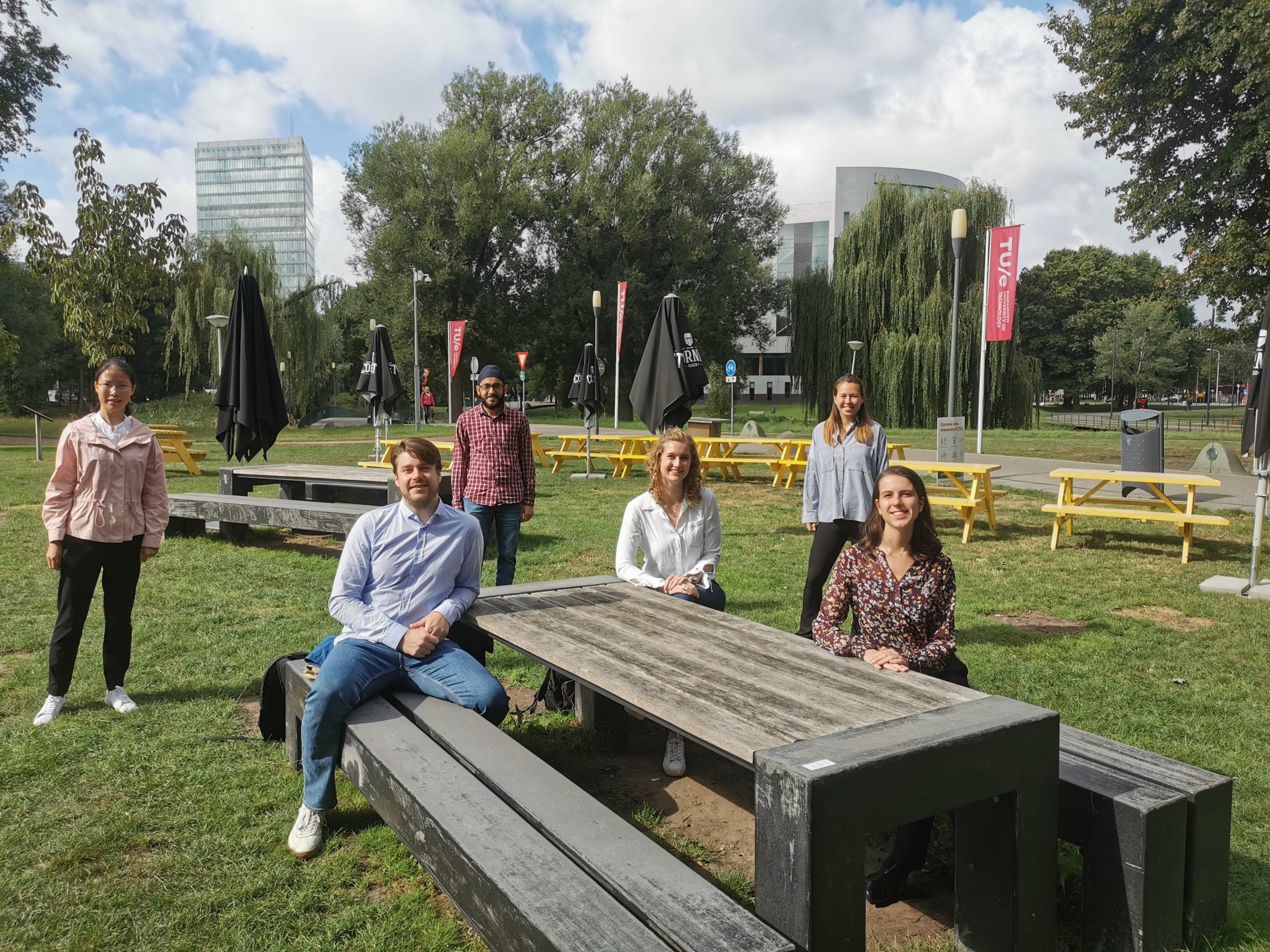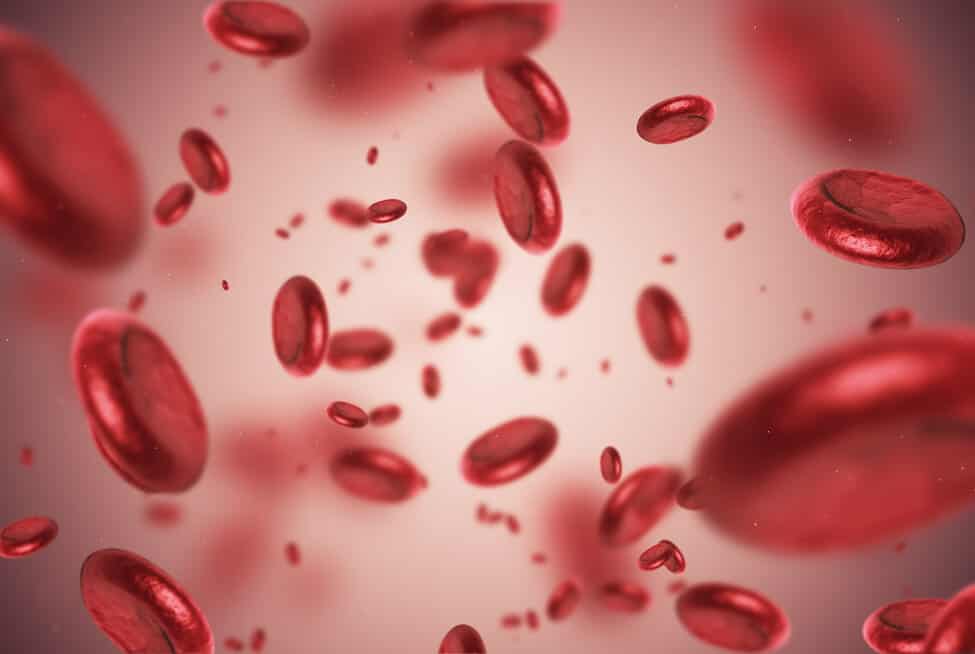
Recovering from corona at home can significantly shorten the time spent in the hospital, says Lieke Luiken, a student in biomedical technology at the Eindhoven University of Technology (TU/e). “We want to help reduce the pressure on hospitals this way.” Together with twelve fellow students, Luiken is working in the Recover@Home student team on a solution that makes rehabilitation at home feasible.
Communication
The solution involves an online platform. This allows a doctor or nurse to communicate very easily with a patient, Luiken explains. With a specially developed device, the patient measures their own heart rate, oxygen saturation levels in the blood, lung function, and muscle strength at home. These are key bodily functions that can be monitored. Something that Luiken learned from conversations with various healthcare professionals, including those from the Maxima Medical Center (MMC) and the Catharina Hospital in the Netherlands.
TU Eindhoven had started the ‘TU/e against COVID-19‘ initiative from the outset of the first corona wave. Students can still sign up for a project that is looking for a solution in the fight against COVID-19. The aim is for the team to evolve into a start-up. They have a business coach and there is help from professors and postdocs from the university and from experts in the field. The MMC and the Catharina Hospital as well as Philips are closely involved with Recover@Home.
The team has grown to thirteen members over the past few months. In addition to biomedical technology, the fields of automotive technology, psychology and technology, industrial design, and business administration are also represented. Everyone has their own task. For example, Luiken interviews healthcare professionals to find out what bodily functions should be monitored. She is in charge of public relations as well. Others are developing the device, platform, and questionnaires for patients in order to hear from them what they need and what they do not actually want.
Enthusiastic
“When I talk to doctors or nurses, they tend to be enthusiastic right away. They think it’s a great initiative that will certainly help healthcare.” Luiken discovered that doctors are always very busy. “They have to allocate their time wisely.”
Affordable and suitable for use at home
Building a measuring device like this is a technical challenge, Luiken goes on to say. The instruments needed to measure the various functions are already out there. In hospitals, but also for home use. However, there is not yet a device that can measure all the various functions. Luiken: “We want to develop this type of integrated device. One that is also affordable and can be used at home.”
High standards
The student team is investigating, among other things, whether or not existing products can be used. “Because we can find a solution much more quickly that way.” For example, the MMC hospital already has a similar online platform which is also used by patients suffering from heart failure or COPD. This meets all the quality and safety requirements that are applicable in the healthcare sector. “These standards are high. For starters, it takes a long time to earn a CE mark,” says Bram van Sambeek, Recover@Home’s business coach.
Corona is now
Van Sambeek: “We want to enter the market as soon as possible. It is urgent, the corona crisis is now. Using existing applications, we are able to speed up testing, get feedback and create a new version. By adapting a platform that already exists, we would be able to launch it on the market. And, at a later stage, develop a solution that is completely made to measure.”
Recover@Home is now focusing on corona patients. But you could also use this type of platform for other diseases, Luiken adds. “In that respect, the concept is extremely important and promising for the future.
Added value
Especially in times of isolation and lockdown, it offers added value to have equipment at the patient’s home, according to Bas Horn. He is a GP in training and involved in Recover@Home as a sounding board. “You may not be able to measure everything in the most ideal way, but you can measure the most important factors.” Horn, too, foresees a promising future. “It’s going to make a difference in healthcare over the next twenty years. There will be more and more opportunities to monitor patients at home so that patients no longer need to constantly go back and forth to the hospital.”
Rule of thumb
The prospective general practitioner followed the bachelor’s degree in biomedical technology at the University of Technology Eindhoven. He then opted for medicine but remained interested in technology. He applauds the initiative from TU Eindhoven. “There are lots of different problems stemming from the corona crisis. One of these concerns the recovery of patients who have been in the ICU.” How long a patient needs to recuperate varies from patient to patient, Horn points out. “But there is a general rule of thumb that if a patient has been in the ICU for one single day, then they will need a whole week to recover. A patient with corona who is in the ICU can remain there for two to three weeks. In that case, they’d need several months to recover.”
Each patient has their own story
As a doctor, Horn considers it essential that you can follow how a patient is really doing. “You simply can’t draw a conclusion from just their heart rate. Every patient always has their own story, a personal situation. For example, when I see that the oxygen saturation levels are lower, I ask questions like: ‘Are you short of breath? Are you still able to climb stairs? Have you fainted?’ If those kinds of questions can be automatically raised via a platform, then that would be extremely valuable.”
“We have actually just started to create this kind of automated questionnaire,” says Luiken with a smile. The platform also features questions about the psychological and mental state of the patient. “Someone can have very good physical values, but they still might be in a poor mental state. That can also pose a threat to the patient’s health.”
Warning system
The students see plenty of possibilities. Like incorporating a warning system into the platform. Luiken: “A red light will then appear if a measurement value is different or a trend is noticeable whenever the values drop too much. This allows us to predict whether the patient is deteriorating so that the professional involved can take immediate action.”
However, first of all, make sure that the basics are in place, Luiken concludes. The student team expects that the first prototype will be ready for trials this year. “Patients will be needed in order to do this. With all the privacy regulations in force, it is still quite difficult to find patients for this. Though luckily, the MMC is a partner, says Luiken. “Through the hospital, we can get a list of patients who are willing to take part in a pilot that we approach them for. If we did not have that option, it would really take years.”







